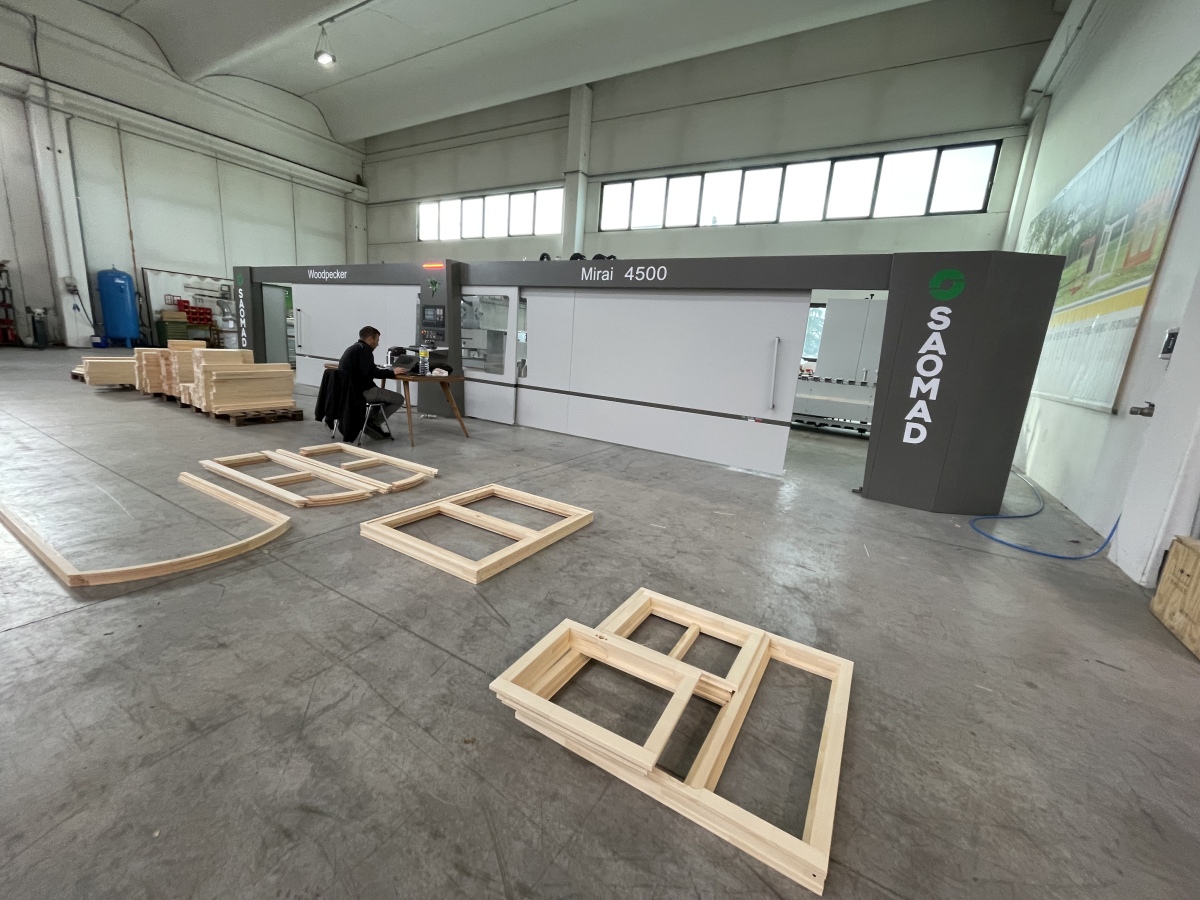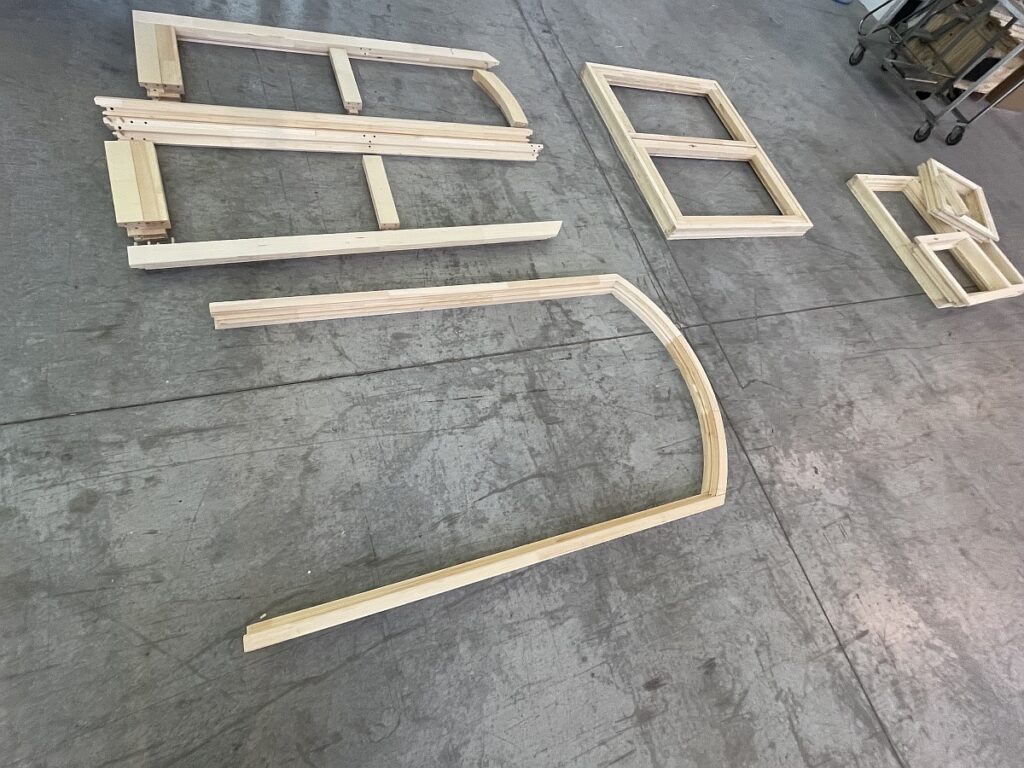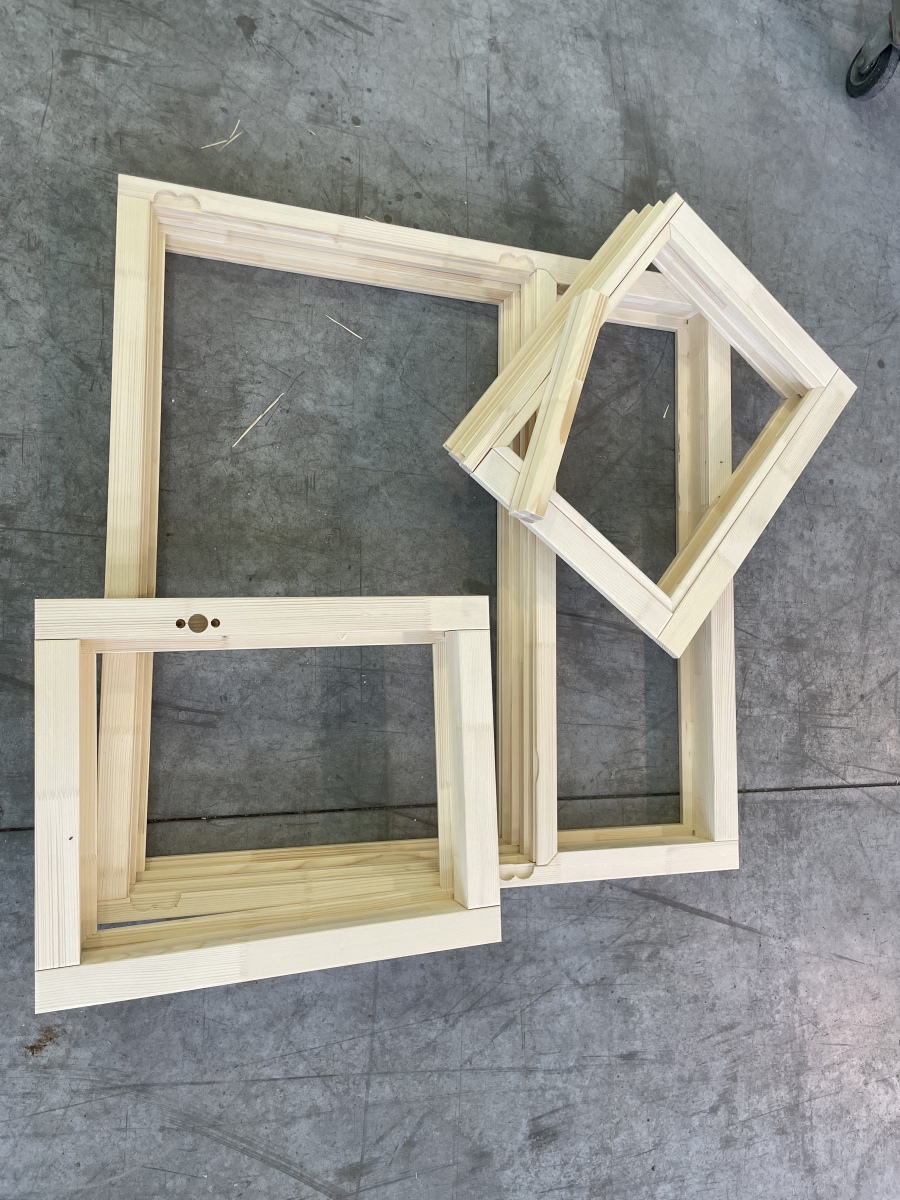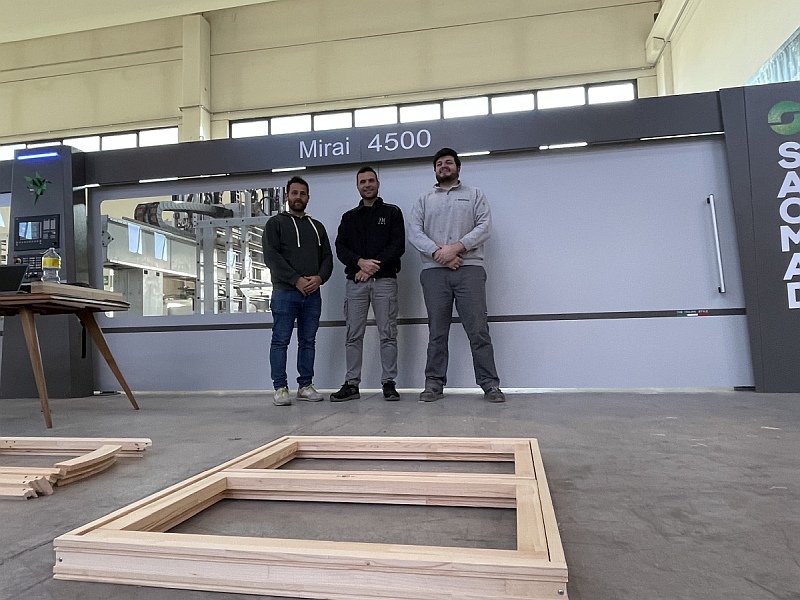In the heart of Valtellina, where the tradition of woodworking has been handed down for generations, Falegnameria Bettiga is a prime example of how technological innovation can be harmoniously integrated with artisan know-how. Founded in 1966, the company recently completed a major technological upgrade with the acquisition of a Woodpecker Mirai.
In this exclusive interview, Claudio Bettiga, representative of the third generation of the company, tells us about the decision-making process that led to the choice of this solution and how the investment fits into the company’s growth strategy ahead of its 60th anniversary in 2026.
The company context: three generations of expertise
The story begins with Ugo Bettiga, who started production in a modest workshop, focusing on general carpentry products. The move to Cercino (SO) a decade later marked the beginning of the expansion that today sees the company managed by the second generation – Ugo’s son and two brothers – with the third generation, represented by Claudio Bettiga, his brother and a cousin, already operating within the organisation.
With a core business focused 95-97% on the production of doors and windows, the company has built a solid reputation in the Lombardy market over time, serving a diverse customer portfolio ranging from construction companies to architectural firms and private individuals.
The genesis of a decision

The decision-making process that led to the acquisition of Woodpecker Mirai began two years ago, when the technological obsolescence of the corner centre required a profound strategic reflection.
Claudio Bettiga recounts: “We had to replace the old machine and aim for a more innovative and higher quality solution.” The competitive analysis conducted was methodical and thorough.
The meeting with Saomad: beyond technology
Saomad was not initially on the Valtellina-based company’s radar. The first contact came about in an unconventional way: a video on Instagram by the company QR Legno showing a machine in production.
“Following QR Legno, another Saomad customer, I saw this machine, wrote to them and asked what kind of machine it was. It was a Woodpecker Mirai,” recalls Claudio Bettiga.
The meeting with the Camporese family was the turning point. It was not just a matter of evaluating technical and performance parameters, but of entering into a business relationship based on shared values.
“Before meeting with an entrepreneur, I met with a family man,” emphasises Bettiga, highlighting how the direct and unbureaucratic approach facilitated the decision-making process. The contract was signed just one week after the meeting.
Technological configuration and production capacity

The initial choice was oriented towards the Woodpecker Just, but analysis of the company’s production fluctuations – “three quiet months and three months when you have to produce for six” – led to the decision to invest in the Woodpecker Mirai, a higher-end solution with greater production capacity.
The final configuration includes a trolley feeding system instead of the Everest system, a choice dictated by considerations of optimising the investment/benefit ratio.
Despite this, the machine’s capabilities have allowed for a significant expansion of the product portfolio: from 3-5 types of windows and doors to over 10 variants, enabling complete coverage of market needs.
New market strategies
The acquisition of Woodpecker Mirai is not only a technological upgrade, but also enables new commercial strategies. “I am thinking, for example, of an offer aimed at small local carpenters,” explains Claudio Bettiga, a partnership where Falegnameria Bettiga “supplies a semi-finished or finished product, allowing small craftsmen to focus on their primary specialisation,” thus optimising the entire value chain.
Operational performance and quality assessment
During testing at the Saomad factories, impressions were extremely positive. “Great quality!” exclaims Bettiga, “Everything that used to be a problem is no longer one. If I had to give it a score, I’d say 9,” a judgement that reflects not only technical performance but also the quality of after-sales support.
Direct assistance is a key differentiating factor: “I had a question, I picked up the phone, called Dario Camporese, he answered… Two minutes later I had an answer.” This contrasts with the experience of other industrial companies where, as Claudio Bettiga notes, “you’re just a number, one of many.“
Installation and commissioning: the operational phase

At the time of the interview, installation was underway with technicians busy levelling and calibrating the machining centre.
The timeline called for start-up within three to four days and a joint training session with Saomad and DDX specialists to optimise production processes for the new products.
The interest generated in the area is already tangible: “In the villages and among small carpenters, word has already spread, so they are curious and come to see,” says Bettiga, highlighting how the investment is already generating attention in the local production fabric.
2026 as a symbolic horizon
The investment in the Woodpecker Mirai takes on particular significance considering that 2026 will mark the 60th anniversary of Falegnameria Bettiga.
“We’ve given ourselves a wonderful gift,” says Bettiga, framing the acquisition not only as a technological upgrade, but as a statement of intent for the company’s future.
The machine represents a bridge between the artisan tradition started by Ugo Bettiga in 1966 and the competitive challenges of today’s markets, providing the third generation with the tools they need to compete effectively while keeping the family legacy alive.
A significant investment in technology: final considerations
The case of Falegnameria Bettiga effectively illustrates how the integration of advanced CNC technologies can evolve a company’s competitive capabilities. The Woodpecker Mirai represents a strategic lever that enables:
- production diversification through the expansion of the portfolio from 5 to over 10 types of doors and windows;
- operational flexibility to manage any production peaks;
- new business models, in this case through partnerships with small artisans;
- potential geographical expansion beyond traditional regional boundaries.
The success of this technological transition lies not only in the technical characteristics of the machine, but also in the alignment between production capacity, corporate vision and commercial relationships based on mutual trust and support.

